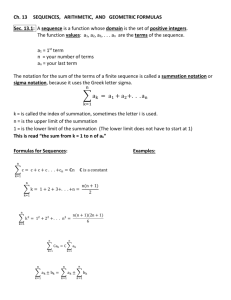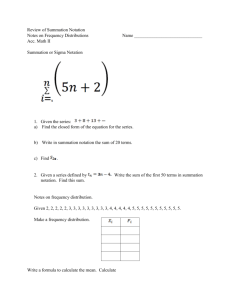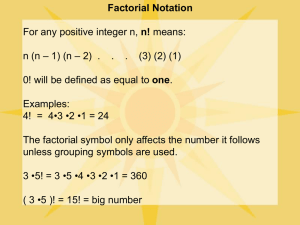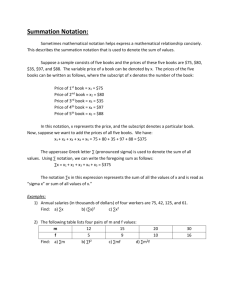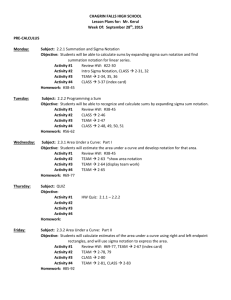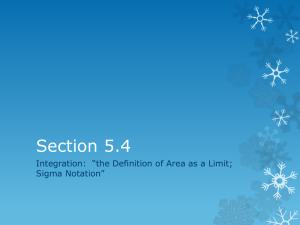sum
advertisement
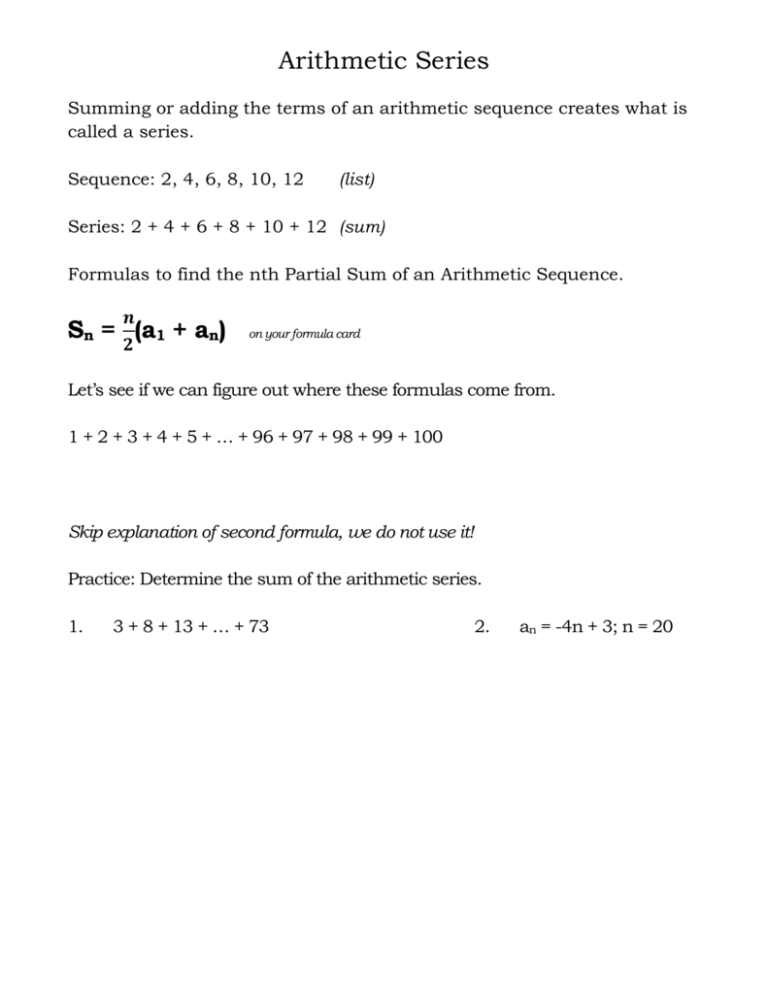
Arithmetic Series Summing or adding the terms of an arithmetic sequence creates what is called a series. Sequence: 2, 4, 6, 8, 10, 12 (list) Series: 2 + 4 + 6 + 8 + 10 + 12 (sum) Formulas to find the nth Partial Sum of an Arithmetic Sequence. 𝒏 Sn = (a1 + an) 𝟐 on your formula card Let’s see if we can figure out where these formulas come from. 1 + 2 + 3 + 4 + 5 + … + 96 + 97 + 98 + 99 + 100 Skip explanation of second formula, we do not use it! Practice: Determine the sum of the arithmetic series. 1. 3 + 8 + 13 + … + 73 2. an = -4n + 3; n = 20 Geometric Series Summing or adding the terms of a geometric sequence creates what is called a series. Sequence: 2, 4, 8, 16, 32, 64 (list) Series: 2 + 4 + 8 + 16 + 32 + 64 (sum) Partial Sum of first nth terms of a Geometric Sequence. Sn = 𝒂𝟏(𝟏−𝒓𝒏 ) 𝟏−𝒓 on your formula card Practice: Determine the sum of the geometric series. 1. 3 + 6 + 12 + … + 1536 2. an = 2(-3)n-1; n = 5 Summation Notation Greek letter called Sigma. It’s a compact way to write a sum. where to “end” the sum 𝑛 ∑ 𝑎𝑖 𝑖=1 index is a variable/letter where to “start” the sum Examples: 4 ∑ 𝑖2 𝑖=0 4 ∑ 𝑖2 𝑖=2 7 1 ∑(2𝑖 + ) 𝑖 𝑖=4 5 ∑𝑖 Summation can be done on the calculator! If it’s multiple choice, just plug it in. If it’s show your work, just show substitutions, then do it calculator to get summation. On a calculator page, catalog (below del button), #4 (must push 4 button), is the middle of second row is sigma symbol, now fill in the parts and press enter. 𝑖=1 5 ∑𝑖 𝑖=1 Rewrite using summation notation: 3 + 6 + 9 + 12 + 15 + 18 + 21 26.5 + 24.5 + .22.5 + …+ 2.5 Writing a Geometric Series using Sigma / Summation Notation Express the sum using sigma/summation notation: 1 + .1 + .01 + .001 + .0001 + … Arithmetic Series in Sigma Notation Write the following in sigma notation. 75 + 70 + 65 + … + (-25)
